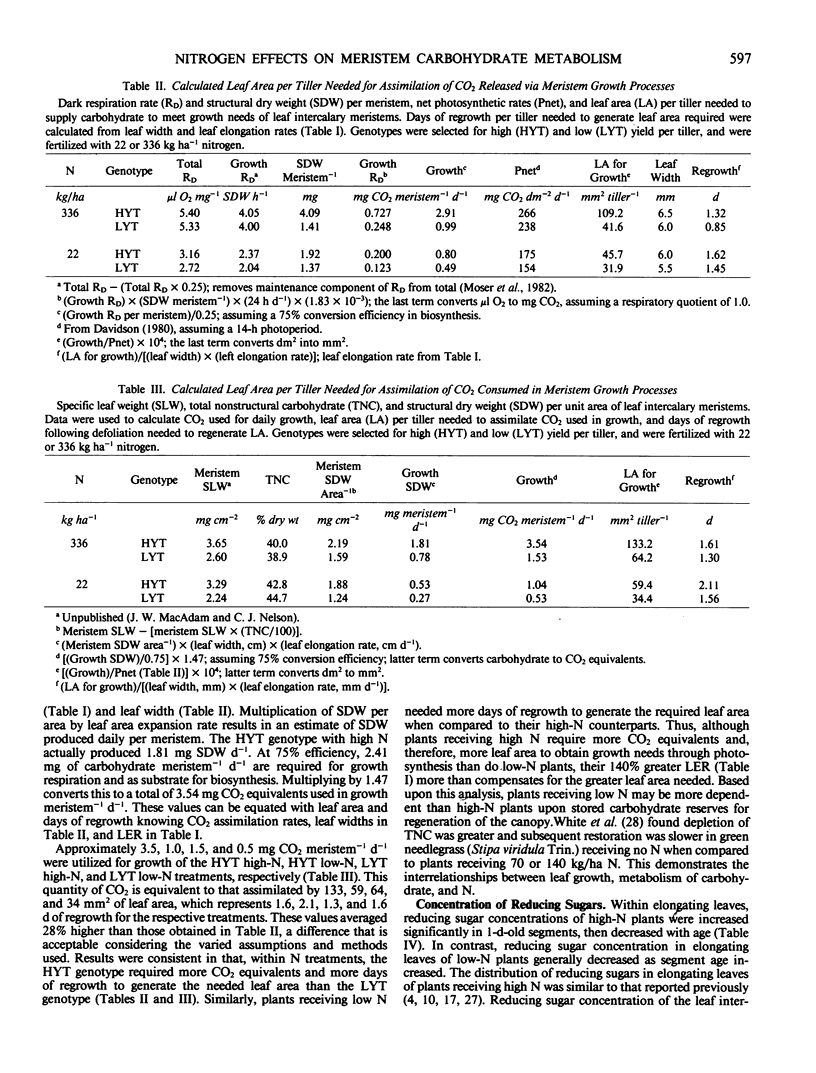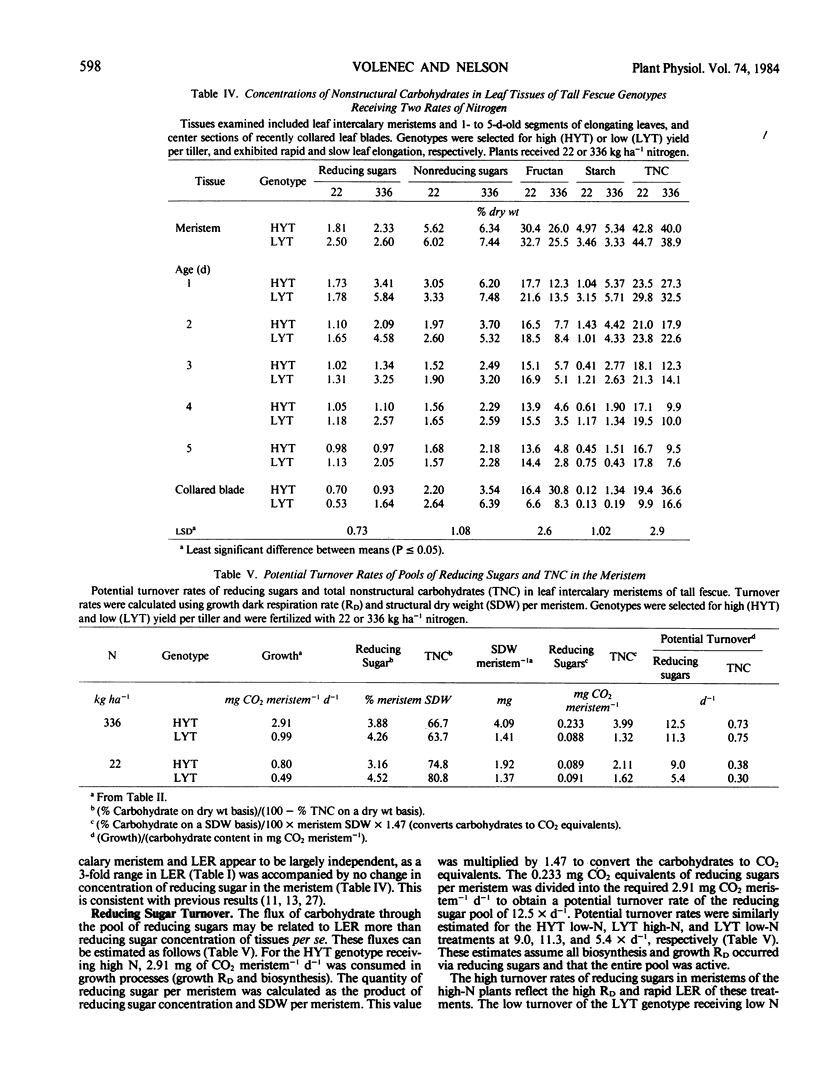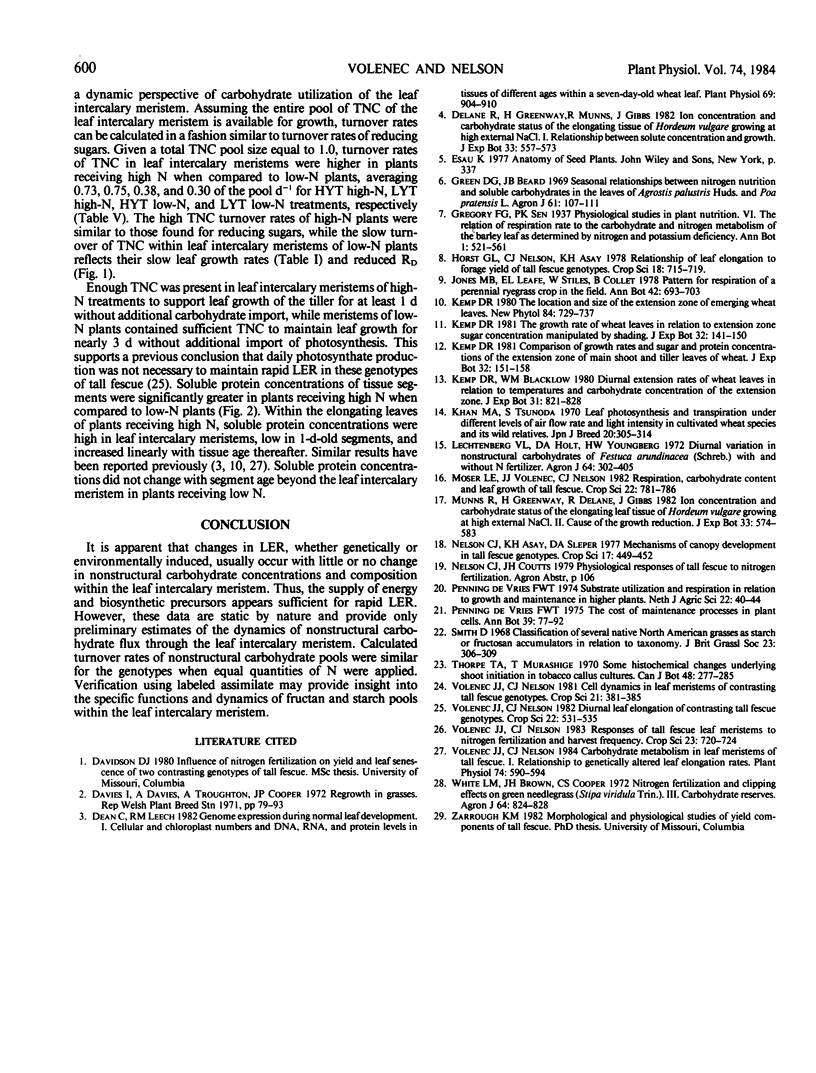Abstract
Our objective was to examine alterations in carbohydrate status of leaf meristems that are associated with nitrogen-induced changes in leaf elongation rates of tall fescue (Festuca arundinacea Schreb.). Dark respiration rates, concentrations of nonstructural carbohydrates, and soluble proteins were measured in leaf intercalary meristems and adjacent segments of elongating leaves. The two genotypes used differed by 43% in leaf elongation rate. Application of high nitrogen (336 kilograms per hectare) resulted in 140% higher leaf elongation rate when compared to plants receiving low nitrogen (22 kilograms per hectare). Leaf meristems of plants receiving high and low nitrogen had dark respiration rates of 5.4 and 2.9 microliters O2 consumed per milligram structural dry weight per hour, respectively. Concentrations of soluble proteins were lower while concentrations of fructan tended to be slightly higher in leaf meristems of low-nitrogen plants when compared to high-nitrogen plants. Concentrations of reducing sugars, nonreducing sugars, and takadiastase-soluble carbohydrate of leaf meristems were not affected by nitrogen treatment. Total nonstructural carbohydrates of leaf meristems averaged 44 and 39% of dry weight for low- and high-nitrogen plants, respectively. Within the leaf meristem, approximately 74 and 34% of the pool of total nonstructural carbohydrate could be consumed per day in high- and low-nitrogen plants, respectively, assuming no carbohydrate import to the meristem occurred. Plants were able to maintain high concentrations of nonstructural carbohydrates in leaf meristems despite a 3-fold range in leaf elongation rates, suggesting that carbohydrate synthesis and transport to leaf intercalary meristems may not limit leaf growth of these genotypes.
Full text
PDF





Selected References
These references are in PubMed. This may not be the complete list of references from this article.
- Dean C., Leech R. M. Genome Expression during Normal Leaf Development : I. CELLULAR AND CHLOROPLAST NUMBERS AND DNA, RNA, AND PROTEIN LEVELS IN TISSUES OF DIFFERENT AGES WITHIN A SEVEN-DAY-OLD WHEAT LEAF. Plant Physiol. 1982 Apr;69(4):904–910. doi: 10.1104/pp.69.4.904. [DOI] [PMC free article] [PubMed] [Google Scholar]
- Volenec J. J., Nelson C. J. Carbohydrate metabolism in leaf meristems of tall fescue : I. Relationship to genetically altered leaf elongation rates. Plant Physiol. 1984 Mar;74(3):590–594. doi: 10.1104/pp.74.3.590. [DOI] [PMC free article] [PubMed] [Google Scholar]


